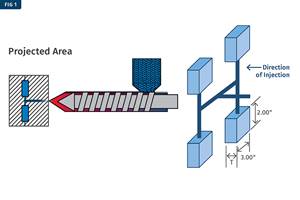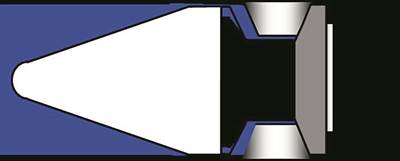Injection Molding: DOEs Done Right
Doing DOEs for the sake of doing them wastes time and money. But they can provide vital information to determine which process variable is determining a critical part characteristic.
Lately I seem to be getting lots of remarks about how I don’t like Design of Experiments (DOEs) and believe they are a waste of time and money. Usually this comes up during public or in-plant seminars, especially when I’m talking to process-development people for medical molding validations or the plastic part approval process (PPAP). So, let me set the record straight and provide the rationale for my perspectives on DOEs.
First, I believe DOEs are necessary and of value in injection molding. In fact, I feel that at least one DOE should be done on all processes—for the variable of hold or second-stage pressure. What I have a problem with is that some DOEs are done just for the sake of doing them, and many are not done correctly, so they do not provide the correct or needed information. This can be a significant waste of time, money and talent. I am talking about hundreds of thousands of dollars wasted. It is hard to compete internationally if these funds are not spent wisely. Allow me to explain my rationale with an example.
I feel that at least one DOE should be done on all processes—for the variable of hold or second-stage pressure.
Within the realm of injection molding there are hundreds of variables. There are so many that some people have the attitude that injection molding is an art. To be honest, there are times I get frustrated when I cannot explain what is happening in a molding process. But there is always a rational answer; we just have not found it yet. DOEs can provide answers. Often the question is: Which process variable(s) is/are controlling a critical aspect of the part? That could be a dimension, warp, gloss, or whatever. In dealing with so many variables it is easy to get confused. One way to get a handle on them is to review the variable with respect to four plastic variables (or categories) identified by Don Paulson, founder of Paulson Training Programs:
• Plastic flow rate (shear rate, injection velocity, etc.);
• Plastic temperature;
• Plastic pressure;
• Plastic cooling rate and time.
Ask the question: Which of these does a given setpoint or variable deal with? This helps separate plastic variables from machine variables. It allows you to analyze how one process change can influence one or more of these categories. What is “the plastic’s point of view”? When tracking down answers to these questions, you often find that when you change one process parameter it changes more than one of the four plastic categories.
For an example, let’s pick fill time. Is the fill time we picked for production correct for this part, or how much tolerance is there on fill time to still make acceptable parts? Let’s say our current fill time is 0.75 sec and we want to see the influence on the part of changing it to 0.50 sec or 1 sec. Note, we deal here with fill time, a plastic variable, not in./ sec, mm/sec, or cc/sec, as these are machine setpoints and may not reflect what is really happening inside the machine, even if it is “calibrated.” So which of the four categories does fill time influence?
In this case it is flow rate, and, to a minor extent, cooling rate and time, because fill rate affects cycle time.
I have no problem with which variable(s) you pick for your DOE—whatever is important to making an acceptable part. But I do have problems with how most people would do this experiment. It would make sense to explain to the processor to make parts with fill times of 0.50, 0.75 and 1 sec by adjusting the injection rate. Nothing else would be allowed to be changed—only the injection velocity. Seems reasonable, may even look good on paper. But my apologies ... this is not what you really want. You are not going to get an apples-to-apples comparison. Why not?
To get an answer you must understand some physics of the machine. This something I learned by doing the viscosity curve. The accompanying photos show a sequence of parts going from slow to fast without changing anything but fill time (injection velocity). Shot size and switchover position were not changed, but the parts did change in size: Fast speeds provided larger parts. The screw over-traveled after it hit the cutoff position due to more momentum. Changing the fill time changed the shot size purely due to kinetic energy.
What has this go to do with your DOE? It is a significant issue. To obtain apples-to-apples data in a DOE on fill time, the processor must reestablish the transfer position and fill speed to provide identically filled parts on first stage at each of the different fill times. You must have identical first-stage parts at the different fill times to get apples-to-apples data for comparison. In many DOE procedures, this is not allowed and the subsequent data is questionable.
What are the ramifications of changing fill time? It changes shear rate, which will change viscosity and perhaps fill pattern. We already established that if you change fill time by changing just the injection velocity, the shot size changes due to momentum. If you use the same stroke transfer position with all three velocities, note what happens from the plastic’s point of view. Doing the slow velocity first to provide a 1 sec fill time, you find that a 0.60-in. transfer position provides a 98% full part by volume. You set up this transfer to second stage to pack out the part, and you have parts that can be tested for good data. Now, you increase the injection velocity to whatever machine setpoint is needed to obtain the 0.75-sec fill time.
What happens if you use the same cutoff position of 0.60 in.? All machines are governed by the laws of physics; so even though this state-of-the-art machine still transfers at 0.60 in., the ram/ screw now has significantly more momentum and will coast beyond the 0.60-in. setpoint farther than at the slow fill time. This might flash the mold. Even if it doesn’t, the first stage does not make the same 98% full part by volume, and the same pack and hold pressure will provide a different cavity pressure. Yes, you have parts, but the data will not be an appropriate apples-to-apples for comparison. To get good data you must re-establish the transfer position to achieve the same 98% full part as with the 1-sec fill time.
Note that we have covered only one of the four categories. Do any of the others demand a change in procedure? Do changes in fill time influence plastic temperature, pressure, or cooling rate or time? Oops, looks like we should have added 0.25 sec to the cooling time to keep cycle time identical at the 0.75-sec fill time.
Bottom line: If you make a change to your process you need to analyze its influence on each of the four plastic categories. Most of the time you will find a change in one process setpoint will change more than one plastic category. Sorry, but good data is critical for a good DOE.
ABOUT THE AUTHOR: John Bozzelli is the founder of Injection Molding Solutions (Scientific Molding) in Midland, Mich., a provider of training and consulting services to injection molders, including LIMS, and other special- ties. Contact john@scientificmolding.com; scientificmolding.com.
Related Content
Is There a More Accurate Means to Calculate Tonnage?
Molders have long used the projected area of the parts and runner to guesstimate how much tonnage is required to mold a part without flash, but there’s a more precise methodology.
Read MoreWhere and How to Vent Injection Molds: Part 3
Questioning several “rules of thumb” about venting injection molds.
Read MoreThe Effects of Stress on Polymers
Previously we have discussed the effects of temperature and time on the long-term behavior of polymers. Now let's take a look at stress.
Read MoreFive Quick Steps Toward Better Blending
Rising costs of resins and additives, along with higher demands for quality and use of regrind, place a premium on proficient blending. Here are some steps to get you there.
Read MoreRead Next
Injection Molding: Time for Another Look at Non-Return Valves
First and foremost, they must seal properly, and check valves with stepped angles or radiused seats perform the best.
Read MorePeople 4.0 – How to Get Buy-In from Your Staff for Industry 4.0 Systems
Implementing a production monitoring system as the foundation of a ‘smart factory’ is about integrating people with new technology as much as it is about integrating machines and computers. Here are tips from a company that has gone through the process.
Read MoreSee Recyclers Close the Loop on Trade Show Production Scrap at NPE2024
A collaboration between show organizer PLASTICS, recycler CPR and size reduction experts WEIMA and Conair recovered and recycled all production scrap at NPE2024.
Read More
.jpg;width=70;height=70;mode=crop)














